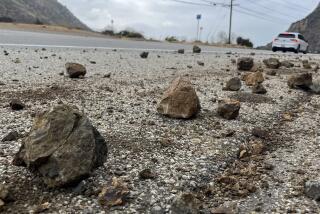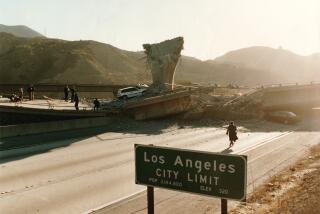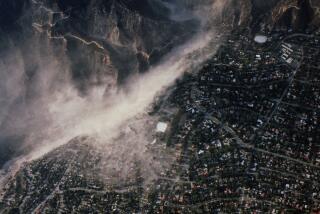Small Changes Play Big Role Along Quake Faults, Researchers Say
- Share via
Tiny changes in a cycle of small slips could set off “the big one” along California’s quake-prone San Andreas fault, according to theoretical models reported today in the journal Nature, but they could also act to stabilize the fault. The fault is in a critical state in which small changes could accelerate or decelerate the quake process, according to Chi-yeun Wang of UC Berkeley and Yongen Cai of Peking University in Beijing.
Wang and Cai ran a series of mathematical simulations of the process and found small increases in pressure could “lock” the fault, making earthquakes less likely, while small decreases in compression could release the locked part and allow earthquakes to happen.
More to Read
Sign up for Essential California
The most important California stories and recommendations in your inbox every morning.
You may occasionally receive promotional content from the Los Angeles Times.










